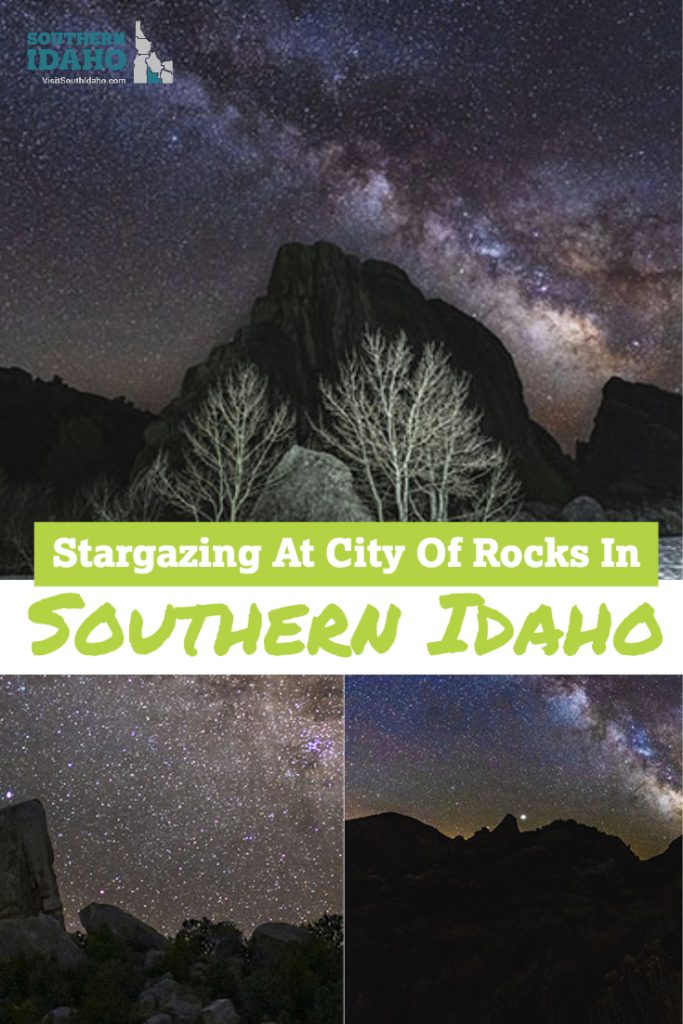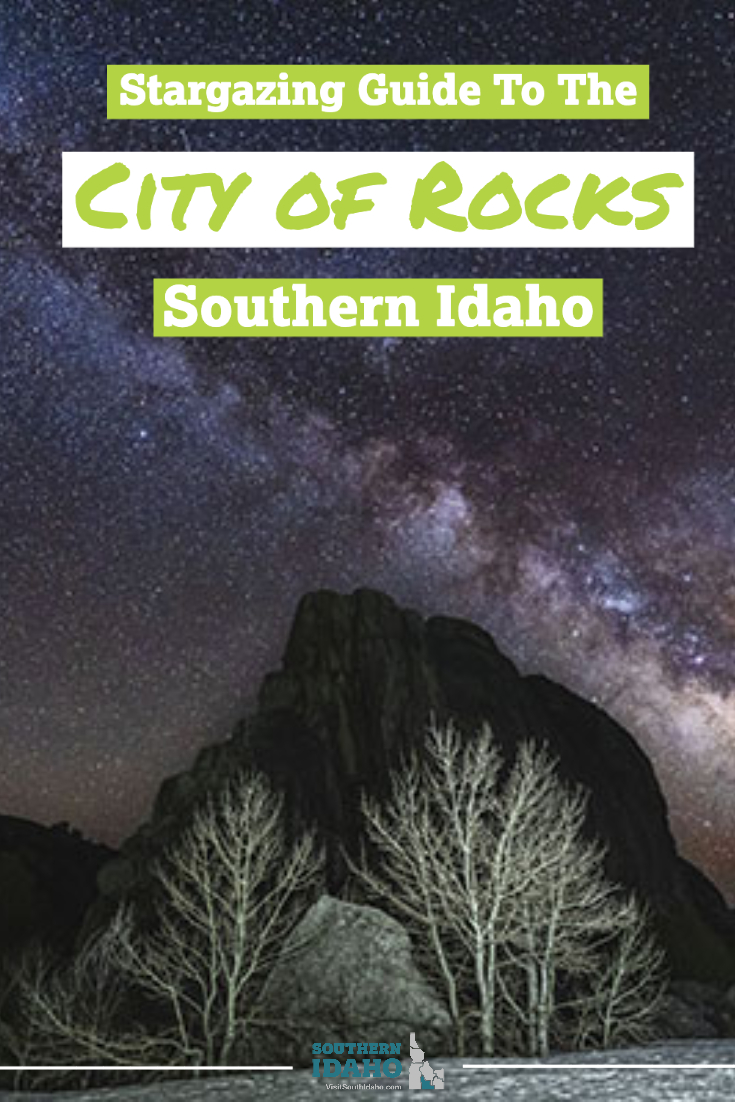Adventure to the City of Rocks
– Drew Nash, Landscape Photographer
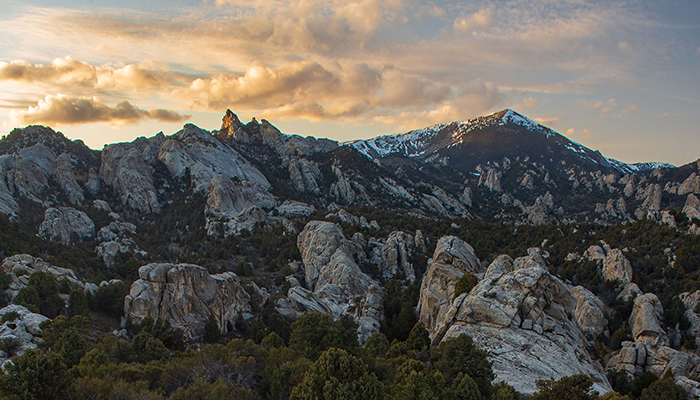
While I had always enjoyed the outdoors, it wasn’t until 2012 that I truly rediscovered nature. After a few years of hiking around and making landscape photos, I decided to try my hand at creating pictures at night. After seeing my first Milky Way photo come to life on the computer, I knew I had found another form of photography that I was passionate about.
Driving through the City of Rocks National Reserve the other day was like driving back through time. Early settlers took the California Trail through the area, leaving their lasting mark with axle grease on the monstrous rocks before them.
I was there to settle into a more relaxed routine. The goal for the night was to drink in the Milky Way Galaxy. There are a number of areas where dark skies are prevalent in Idaho and while the Central Dark Sky Reserve gets a lot of attention these days, the City of Rocks National Reserve is terrific. With a class 2 Bortle Scale rating the reserve is just shy of excellence dark sky territory. The lack of light pollution is the key to heaven’s door above.
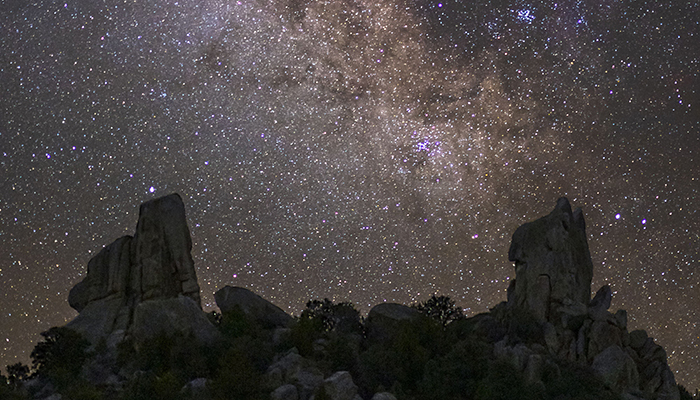
My girlfriend and I arrived early to take in some of the wonders the reserve had to offer and scout out locations for scenic night photography. We looked through Window Arch and wandered about Flaming Rock. Watched climbers at Bath Rock and played in the snow around the Bread Loaves before settling down and drinking in the views around Twin Sisters while having lunch.
We debated where the best place to spend the sunset would be. We saw an old stone structure when entering the park, but it was facing the wrong way for sunset. There was a huge spire across from Camp Rock that would make for a gorgeous foreground, but we decided that it might not tell the story of the park. We wanted a scene that showed off the City of Rocks and its massive appeal, a real scene setter, not just a lone formation. We settled on the trailhead for Flaming Rock and set up our cameras. We were facing northwest with the hopes that the sky would explode in color and sweep across the rocky landscape. That’s when I turned around and saw another composition that I liked. I went back and forth (the benefit of having multiple cameras) and made photos as the sun went from golden hour to sunset to blue hour. This sunset may not have been the most glorious in history, that wasn’t the reason we were there. We wanted to explore the luminance of the Milky Way Galaxy.
With current COVID-19 restrictions in place we couldn’t reserve a camping spot or the yurt. Though I would highly recommend either one once restrictions are lifted. Instead we hunkered down in my trusty SUV and did an equipment check, making sure we had everything we needed for a socially distanced night under the stars. A park ranger stopped by and we chatted from six feet away and let him know what we had planned for the night. Afterwards, I went ahead and downloaded my photos from the day. They were nice and all, but I couldn’t wait to take some night shots in a few hours. I threw a blanket over my head and drifted off.
My eyes shot open. It was two o’clock in the morning. Sure it’s early, but in order to see the core of the Milky Way galaxy around here in April, that’s the time I had to shoot for. The plan was simple, hit three locations in the park, don’t hit any animals, and stay alert. After using our night photography app, PhotoPills, we knew we’d be shooting from about 3:15 a.m. to 4:15 a.m.
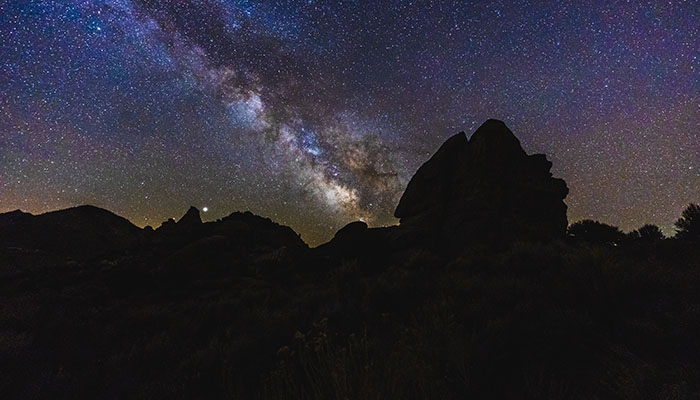
One of the reasons I think people love night photography so much is that it delivers us a world of stars that otherwise go unnoticed. The fact of the matter is that high-end camera lenses and sensors are able to record far more light (2-3 times) than our eyeballs use to see the night sky.
Long exposure times allow for details to be recorded in the camera. Even then, photographers have to make several adjustments to bring out the nuances everyone loves to see. So don’t expect to see vivid nightscapes without the help of good camera gear. Though even an entry-level camera can record scenes otherwise lost to our own vision.
We arrived at a campground near the Twin Sisters and made the short jaunt to the shooting location. I knew I wanted some images with rocks silhouetted and this was my chance. After about 10 minutes of shooting I knew I had some options. We drove to the Bread Loaves and jumped out. On a whim we set up in a slightly different location, allowing some snow into the foreground giving us stronger framing within the composition.
I liked this overall scene a bit more than the last so we decided to try some light painting with just our headlamps. This worked out well and we moved on to our last setup. The Devil’s Bedstead reminded me of a goalpost and I wanted the Milky Way to be the football going through the middle. I felt a vertical orientation would give me the best look and break up the string of horizontal images I’d been making. The problem? I didn’t have the right lens on my camera to do the job. With a quick lens swap, I was able to make the image I wanted and we drove off into the sunset…er, sunrise.
Be sure and research your visit at https://www.nps.gov/ciro/index.htm.
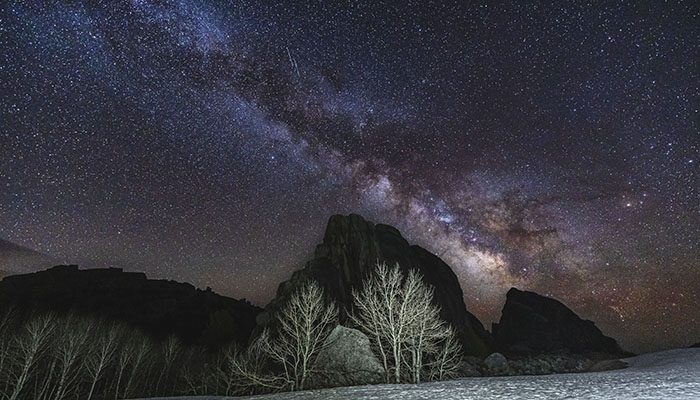
Drew Nash is a fine art photographer and educator based in southern Idaho. His work has been published by Clif Bar, Nike, New York Times,Washington Post,the Associated Press and others.
To see more of Nash’s work visit www.flyphotography.photos andfollow him on Instagram @drewnashfineartistry
Pin it for Later!
